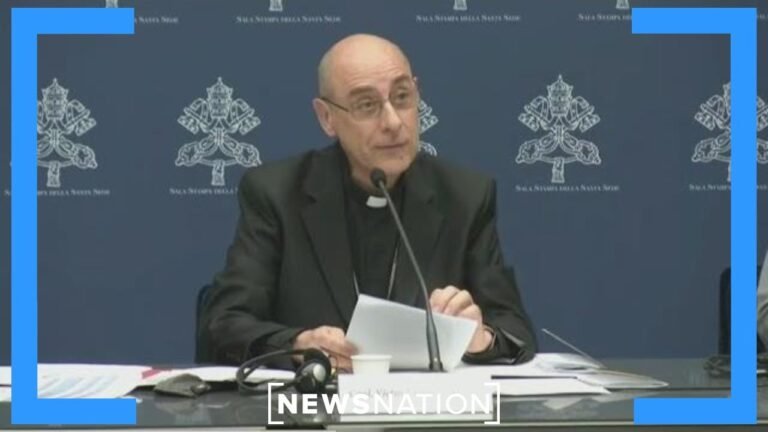The Significance of the Virgin Mary of Guadalupe
The Virgin Mary of Guadalupe stands as a powerful symbol of faith and cultural identity in Mexico and beyond. Revered as the patroness of the Americas, her image has transcended religious boundaries, uniting millions in devotion and inspiration. This iconic figure, with her rich history and profound significance, embodies themes of compassion, hope, and resilience, making her an enduring presence in both spiritual and social contexts. As we explore her story, we uncover the deep-rooted influences she has on art, culture, and the collective consciousness of a nation.
What significance does the Virgin Mary of Guadalupe hold?
The Virgin Mary of Guadalupe is a symbol of Mexican identity, faith, and cultural pride, representing compassion and hope for millions, especially within the Catholic community.
- Symbol of Faith: The Virgin Mary of Guadalupe is a significant religious figure in Catholicism, representing hope and faith for millions of believers, particularly in Mexico and Latin America.
- Historical Significance: Her appearance to Juan Diego in 1531 is considered a pivotal event in the history of Christianity in the Americas, leading to the spread of Catholicism among Indigenous peoples.
- Cultural Icon: The Virgin of Guadalupe is a central figure in Mexican culture, celebrated in various art forms, festivals, and national identity, embodying the blend of Indigenous and Spanish heritage.
- Global Influence: Beyond Mexico, the Virgin Mary of Guadalupe has become a symbol of social justice and empowerment, inspiring movements for civil rights and equality across various communities worldwide.
Are the Virgin Mary and Our Lady of Guadalupe the same?
The Virgin Mary and Our Lady of Guadalupe are indeed connected, as Guadalupe represents a specific manifestation of the Blessed Virgin Mary. Throughout history, Mary has appeared in various forms and titles, each reflecting her significance to different cultures and communities. Our Lady of Guadalupe, who appeared in Mexico in the 16th century, holds a special place in the hearts of millions, symbolizing hope and compassion.
This unique apparition highlights the universal nature of Mary’s presence, transcending geographical and cultural boundaries. While Guadalupe is a distinct title, it encapsulates the essence of Mary as a mother and protector. Her appearances serve as reminders of faith, unity, and love, fostering a deep spiritual connection among her followers across the world.
What does the miracle of Our Lady of Guadalupe entail?
The miracle of Our Lady of Guadalupe unfolded when Juan Diego, a humble native, encountered a vision of the Virgin Mary on Tepeyac Hill. Following her instructions, he gathered roses in his cloak and presented them to the local bishop as proof of her appearance. When he unveiled his cloak, not only did the roses tumble to the floor, but a stunning image of the Virgin Mary was revealed, leaving the bishop in awe. This miraculous event led to the construction of a church in her honor, solidifying her significance in the hearts of the faithful.
What is the narrative behind the Virgen de Guadalupe?
The story of the Virgen de Guadalupe is rooted in a remarkable series of events that took place in 1531. According to tradition, Mary appeared to Juan Diego, an indigenous Aztec who had recently converted to Christianity, on four occasions between December 9 and December 12. During their first encounter, she asked him to build a shrine at Tepeyac Hill, the very place where she manifested her presence. This powerful vision not only transformed the landscape of faith in Mexico but also symbolized the blending of indigenous culture and Christianity, making the Virgen de Guadalupe a cherished figure in Mexican history and spirituality.
Unveiling the Cultural Impact of a Sacred Icon
Throughout history, sacred icons have transcended their religious significance to become powerful symbols of cultural identity and heritage. These revered images, deeply embedded in the beliefs and practices of communities, serve not only as spiritual guides but also as reflections of societal values and historical narratives. The artistry and craftsmanship involved in their creation elevate them to objects of admiration, fostering a sense of pride and continuity among generations. As cultures evolve, these icons adapt, intertwining traditional elements with contemporary expressions, thereby enriching the cultural tapestry.
The impact of these sacred icons extends beyond the confines of religious practice, influencing art, literature, and social movements. They inspire artists and thinkers to explore themes of faith, resilience, and communal strength, often sparking dialogues about identity and belonging. In an increasingly globalized world, the preservation and celebration of these symbols become vital in maintaining cultural diversity and fostering mutual respect among different communities. By unveiling the layers of meaning behind these sacred icons, we not only honor their significance but also recognize their role in shaping the collective consciousness of humanity.
Exploring Faith and Identity Through Mary of Guadalupe
The figure of Mary of Guadalupe serves as a powerful symbol of faith and identity for millions around the world. Her image, which blends indigenous and Spanish elements, transcends cultural boundaries, embodying a message of hope and compassion. For many, she represents not only spiritual guidance but also a deep connection to their heritage, making her an enduring icon in the exploration of personal and collective identity. This duality invites individuals to reflect on their beliefs and the narratives that shape their lives, fostering a sense of belonging and resilience.
As communities gather to honor Mary of Guadalupe, they engage in vibrant traditions that reinforce their shared values and histories. Festivals, prayers, and artistic expressions centered around her figure create a rich tapestry of cultural significance, allowing people to celebrate their faith while simultaneously acknowledging their unique backgrounds. Through these practices, Mary of Guadalupe becomes a bridge between the sacred and the personal, encouraging a dialogue about identity that resonates across generations. She inspires individuals to embrace their roots while navigating the complexities of modern life, ultimately guiding them toward a deeper understanding of themselves and their place in the world.
A Symbol of Hope and Resilience in Modern Times
In an era characterized by uncertainty and rapid change, symbols of hope and resilience have become more vital than ever. One such emblem is the vibrant sunflower, which stands tall and unwavering, even in the harshest conditions. With its brilliant yellow petals and ability to follow the sun, the sunflower serves as a reminder that positivity and strength can flourish amidst adversity. This botanical marvel not only captivates the eye but also inspires the human spirit to seek light, even in the darkest of times.
As communities around the globe face challenges ranging from environmental crises to social upheaval, the sunflower has emerged as a unifying symbol of perseverance. Initiatives such as community gardens and sustainability projects often feature sunflowers, encouraging collective action and growth. These initiatives not only beautify urban landscapes but also foster a sense of belonging and shared purpose, reminding us that together, we can cultivate resilience and hope in our lives and neighborhoods.
Moreover, the sunflower’s unique ability to thrive in various environments mirrors our own capacity for adaptability. Just as the sunflower turns toward the sun, we too can orient ourselves towards hope, seeking out opportunities for growth and connection. In a world that often feels fractured, the sunflower stands as a beacon of optimism, inviting us to embrace our resilience and work together towards a brighter future, one petal at a time.
The Virgin Mary of Guadalupe stands as a powerful symbol of faith, resilience, and cultural identity, bridging the gap between diverse communities and histories. Her story continues to inspire millions, reminding us of the profound impact of spirituality in our lives. As we honor her legacy, we celebrate not only the devotion she inspires but also the rich tapestry of traditions and beliefs that unite us all.






